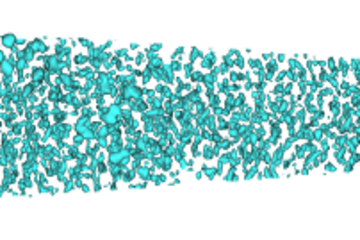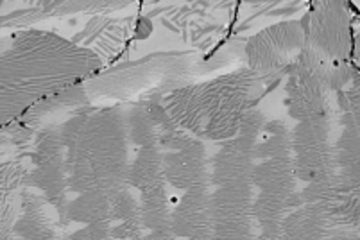All genres
41.
Journal Article
Design of a twinning-induced plasticity high entropy alloy. Acta Materialia 94, pp. 124 - 133 (2015)
42.
Journal Article
Retardation of plastic instability via damage-enabled microstrain delocalization. Journal of Materials Science 50 (21), pp. 6882 - 6897 (2015)
43.
Journal Article
An Overview of Dual-Phase Steels: Advances in Microstructure-Oriented Processing and Micromechanically Guided Design. Annual Review of Materials Research 45, pp. 391 - 431 (2015)
44.
Journal Article
Origin of shear induced β to ω transition in Ti–Nb-based alloys. Acta Materialia 92, pp. 55 - 63 (2015)
45.
Journal Article
Nanolaminate transformation-induced plasticity-twinning-induced plasticity steel with dynamic strain partitioning and enhanced damage resistance. Acta Materialia 85, pp. 216 - 228 (2015)
46.
Journal Article
A novel roll-bonding methodology for the cross-scale analysis of phase properties and interactions in multiphase structural materials. International Journal of Materials Research 106 (1), pp. 3 - 14 (2015)
47.
Journal Article
Integrated experimental–simulation analysis of stress and strain partitioning in multiphase alloys. Acta Materialia 81, pp. 386 - 400 (2014)
48.
Journal Article
Strain localization and damage in dual phase steels investigated by coupled in-situ deformation experiments and crystal plasticity simulations. International Journal of Plasticity 63, pp. 198 - 210 (2014)
49.
Journal Article
Smaller is less stable: Size effects on twinning vs. transformation of reverted austenite in TRIP-maraging steels. Acta Materialia 79, pp. 268 - 281 (2014)
50.
Journal Article
Composition Dependance of Phase Stability, Deformation Mechanisms, and Mechanical Properties of the CoCrFeMaNi High-Entropy Alloy System. JOM 66 (10), pp. 1993 - 2001 (2014)
51.
Journal Article
Hydrogen-assisted decohesion and localized plasticity in dual-phase steel. Acta Materialia 70, pp. 174 - 187 (2014)
52.
Journal Article
A novel, single phase, non-equiatomic FeMnNiCoCr high-entropy alloy with exceptional phase stability and tensile ductility. Scripta Materialia 72–73, pp. 5 - 8 (2014)
53.
Journal Article
Enhanced superplasticity in an Al-alloyed multicomponent Mn–Si–Cr–C steel. Acta Materialia 63, pp. 232 - 244 (2014)
54.
Journal Article
On dislocation involvement in Ti–Nb gum metal plasticity. Scripta Materialia 68 (10), pp. 805 - 808 (2013)
55.
Journal Article
Multi-Axial Deformation Setup for Microscopic Testing of Sheet Metal to Fracture. Experimental Mechanics 52 (7), pp. 669 - 678 (2012)
56.
Journal Article
Identification of the continuum damage parameter: An experimental challenge in modeling damage evolution. Acta Materialia 60 (8), pp. 3581 - 3589 (2012)
57.
Journal Article
A micropillar compression methodology for ductile damage quantification. Metallurgical and Materials Transactions A 43 (3), pp. 796 - 801 (2012)
58.
Journal Article
Indentation-based damage quantification revisited. Scripta Materialia 63, pp. 316 - 319 (2010)
59.
Journal Article
Microstructural Banding Effects Clarified Through Micrographic Digital Image Correlation. Scripta Materialia 62 (11), pp. 835 - 838 (2010)
60.
Journal Article
A brittle-fracture methodology for three-dimensional visualization of ductile deformation micromechanisms. Scripta Materialia 61 (1), pp. 20 - 23 (2009)











